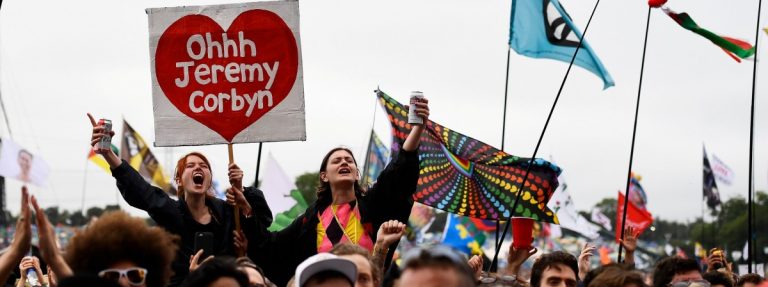
The surprising results of the 2017 election were strongly related to both age and education, with university students one of most heavily Labour-leaning groups. According to YouGov’s national data, some 64 percent of students voted for the Labour party compared to only 19 percent for the Conservatives.
Surveys of this kind give a good impression of the national distribution of student votes. However, there is little detailed evidence about students’ voting preferences and how these have changed over time. But a recent discovery at the University of Exeter, our own institution, provided a rare opportunity to do just that – at least at the local level.
In 1979, Exeter’s politics department conducted a survey of the university’s students about the election in May of that year. We found a copy of the research produced from that survey in the university library. This document, as well as the preservation of the original data by the UK Data Service, allowed us to repeat the survey this year for the 2017 election.

The 2017 survey shows most students voting Labour expressed confidence in Labour leader Jeremy Corbyn. Source: Reuters
These two surveys, conducted 38 years apart, offer an insight into the changing student vote at Exeter. They capture a shift from a campus that largely supported the Conservatives to one backing Labour.
Exeter has long had an anecdotal reputation as a bastion for student Conservatism. Several prominent Conservative political figures are Exeter alumni, including the communities secretary Sajid Javid and ConservativeHome former editor Tim Montgomerie.
Indeed, the paper produced after the 1979 survey described the campus as “a haven for those from public schools and higher social groups”. Yet while this may have led to more votes for the Conservatives at Exeter in the past, our new survey shows this is no longer the case.
Shifting support
In 1979, the Conservative party won the Exeter student vote by a wide margin, with an absolute majority of 56.4 percent. Labour was in third place on only 15.4 percent, behind the Liberal party on 21.4 percent.
Party vote share among Exeter students in 1979

Based on 117 responses (Target=298)
By 2017, the situation had completely changed. We found it was instead the Labour party which won a landslide at Exeter, garnering 59.2 percent of the vote against the Conservatives on 20.9 percent. The Liberal Democrats took just 14.4 percent.
Party Vote Share among Exeter Students in 2017

Based on 295 responses (Target = 30-40,000)
A large part of this shift appears to have occurred very recently. When we asked our 2017 respondents how they had voted in 2015, Labour was not dominant at Exeter. In fact, the Conservatives narrowly won the vote. This in an election in which Labour won 18 24-year-olds by about 16 percent points nationwide. Exeter’s Conservative image may therefore have held at least in part until quite recently.
Party Vote Share among Exeter Students in 2015 (Estimate)

Based on recalled 2015 vote in the 2017 sample excluding non-voters (n = 210)
The Labour vote appears to be unrelated to the family backgrounds of modern Exeter students. In 1979, students overwhelmingly reported their parents were also Conservative voters. In 2017, while a greater share of parents were now Labour voters, the Conservatives were still the plurality choice among Exeter parents.
Our survey also showed although most students voting Labour expressed confidence in Labour leader Jeremy Corbyn, they were less enthusiastic about aspects of the Labour manifesto – including relaxing restrictions on trade unions and stopping the sale of council houses.
The decline of student Conservatism at Exeter seemed primarily related to other factors. Labour was particularly successful among women, for example. This reversed the pattern shown in the 1979 survey, in which the Conservatives were significantly ahead with women.
The Labour campaign also appears to have been quite effective. Labour voters on average decided later than Conservatives during the campaign, and Labour dominated among the most active users of political social media – in particular on Twitter.
https://twitter.com/zebra_crispy/status/873000958963453952
However, the most significant factor appeared to be the 2016 EU referendum. Brexit split the country but united students, with 84 percent backing Remain nationally. Likewise, according to our data, Exeter students voted 79 percent to 13.2 percent to remain, including 75.4 percent of those who had voted Conservative in 2015. Consequently, almost half (48.6 percent) of the Exeter students who voted Conservative in 2015 had switched to Labour or the Liberal Democrats in 2017.
While our survey only shows a small part of the national picture in terms student voting, it demonstrates clearly the damage done to the Conservative brand among students, even at institutions at which the party has traditionally done well.
To win back student voters, the Conservative party must find a way to repair the damage done by Brexit. If it fails, it risks losing a generation of educated young people, and particularly young women, who might otherwise have formed the next generation of Conservative candidates, activists and voters.
By Nicholas Dickinson, Doctoral Researcher in Political Science, University of Exeter and Felix-Christopher von Nostitz, Research and Teaching Assistant in Political Science, University of Exeter
This article was originally published on The Conversation. Read the original article.
Liked this? Then you’ll love these…
In Tweets: What people say about Labour’s plan to axe tuition fees
United Kingdom: Huge student turnout among #GenerationVote – NUS







